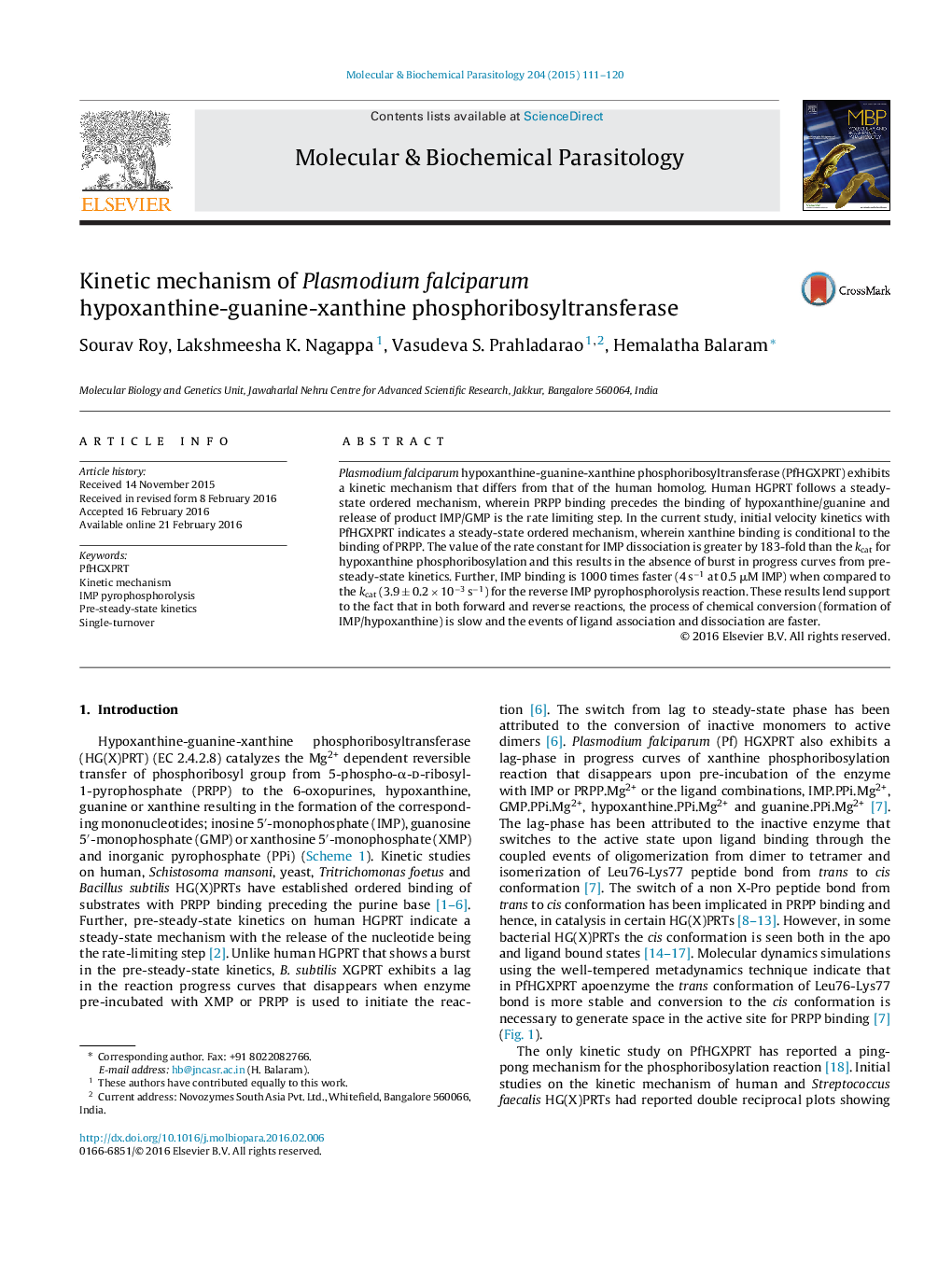| Article ID | Journal | Published Year | Pages | File Type |
|---|---|---|---|---|
| 2829723 | Molecular and Biochemical Parasitology | 2015 | 10 Pages |
•Catalysis by Plasmodium falciparum hypoxanthine-guanine-xanthine phosphoribosyltransferase (PfHGXPRT) is modulated by oligomerization and peptide bond isomerization.•PfHGXPRT follows steady-state ordered mechanism displaying absence of burst phase in pre-steady-state progress curves.•The rate limiting step is a step prior to catalysis in PfHGXPRT while in human HGPRT it is product release.•Human and PfHG(X)PRT show distinctly different kinetic mechanisms.
Plasmodium falciparum hypoxanthine-guanine-xanthine phosphoribosyltransferase (PfHGXPRT) exhibits a kinetic mechanism that differs from that of the human homolog. Human HGPRT follows a steady-state ordered mechanism, wherein PRPP binding precedes the binding of hypoxanthine/guanine and release of product IMP/GMP is the rate limiting step. In the current study, initial velocity kinetics with PfHGXPRT indicates a steady-state ordered mechanism, wherein xanthine binding is conditional to the binding of PRPP. The value of the rate constant for IMP dissociation is greater by 183-fold than the kcat for hypoxanthine phosphoribosylation and this results in the absence of burst in progress curves from pre-steady-state kinetics. Further, IMP binding is 1000 times faster (4 s−1 at 0.5 μM IMP) when compared to the kcat (3.9 ± 0.2 × 10−3 s−1) for the reverse IMP pyrophosphorolysis reaction. These results lend support to the fact that in both forward and reverse reactions, the process of chemical conversion (formation of IMP/hypoxanthine) is slow and the events of ligand association and dissociation are faster.
Graphical abstractFigure optionsDownload full-size imageDownload high-quality image (182 K)Download as PowerPoint slide
